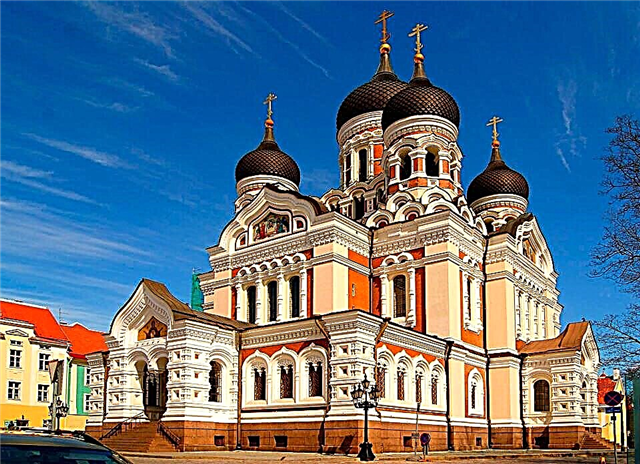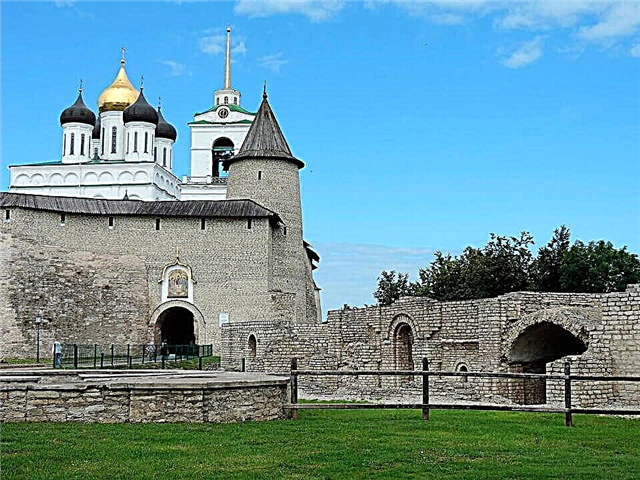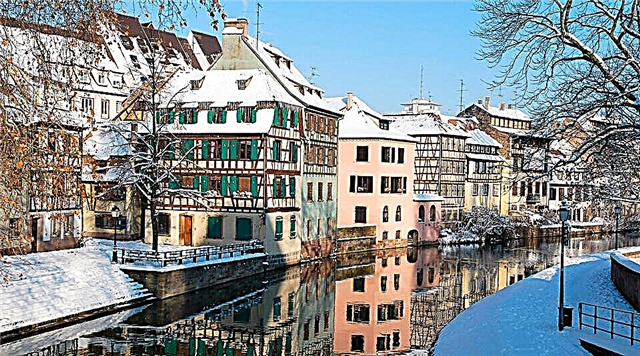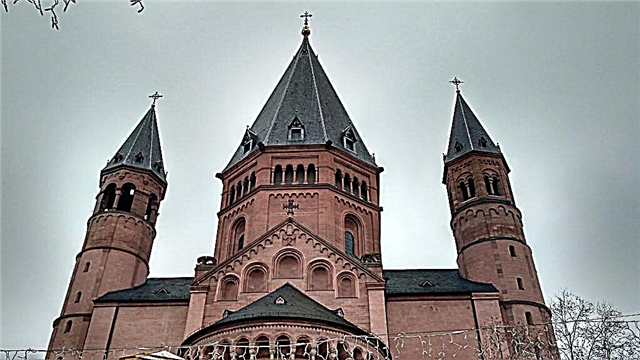Mainz Cathedral is located in the city of Mainz, located in southwestern Germany at the mouth of the Main River. This majestic building of the Roman Catholic era is located in the center of the historical part of this German city on its Market Square. It is no coincidence that this divine temple was erected precisely at the intersection of many paths, which later became the main religious center north of the Alps.
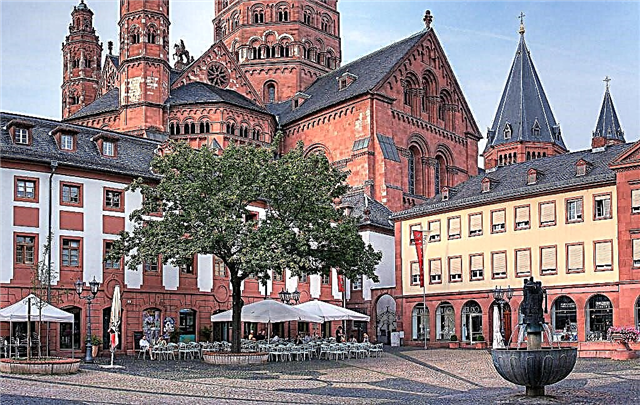
Description
The cathedral building is impressive in size. Inside, the structure is 109 meters long, while outside it is 116 meters long. The height of the highest western tower is 83 meters. It's amazing how at the beginning of the first millennium they could build a building of such grandiose size and such a huge height.
Germany hides many interesting facts - read more in our life hack.
This gigantic building is the hallmark of Mainz and its main attraction, personifying the centuries-old history of the city's development.

History
The construction of the cathedral coincided with the reign of Archbishop Willigis, who simultaneously served as the Arch Chancellor of the Holy Roman Empire. Due to his extraordinary abilities, Willigis quickly achieved high rank. When Willigis served at the court of the Roman emperor, he highly appreciated his intelligence, and after the death of the crowned nobleman, he was honored to be the administrator of his heir.
There is a legend that Willigis was the son of a commoner who made carriages. While at court, Willigis had suffered enough from the nobility of all kinds of ridicule and barbs because of his ignoble origin. One night, the coachman's son painted ordinary wheels on the wall of his house as proof that he was not ashamed of his coachman father. The residents of Mainz really liked this act, and they used the image of the wheels as the emblem of their city.

Inspired by the view of St. Peter's Basilica in Rome, Archbishop Willigis set about erecting a similar structure in Mainz, devoting almost his entire life to the construction. The cathedral was built over more than two centuries, starting in 975 and ending in 1239, when the basilica was consecrated and appointed patrons of St. Martin and St. Stephen. The names of these patron saints can be found in the name of the cathedral.
The protracted construction is explained by devastating fires that from time to time occurred on the territory of the building being built. So in 1009, the fire that arose after the consecration of the cathedral was so destructive that Willigis could not survive the collapse of his hopes associated with construction, and soon died. The archbishop, who devoted his life to the construction of the cathedral, was buried within its walls, and the Catholic Church, in order to perpetuate the name of the archbishop, celebrates February 23 as the day of St. Willigis.

Cathedral restoration
Throughout its existence, the walls of this temple have been silent witnesses of seven destructive fires, several wars and occupations. Therefore, the building of the cathedral was constantly completed and restored. At the beginning of the 19th century, the once majestic structure already had such a deplorable appearance that the question arose about its demolition. But at some point, common sense triumphed, and the building began to rebuild, resuming restoration work.
Coronation of royalty
Mainz Cathedral for several centuries in a row was the main center for the coronation of royal persons, among whom the first were blessed to the emperor by St. Martin of Tours and St. Stephen, and in 1002 Archbishop Willigis crowned the reign of Henry II. Conrad II, Frederick II and other German kings also received the imperial crown here. The largest celebration of the Middle Ages, which took place within the walls of this temple, marked the chivalry of the offspring of Emperor Frederick II in 1184.

Mainz Cathedral Interior
Mainz Cathedral is considered the largest in Germany. Despite the series of destruction that the main residence of the Roman Catholic bishopric had to endure, the interior decoration of the building retained its richness and splendor.
The central nave is decorated with amazingly beautiful frescoes illustrating the life of Jesus Christ. Near the majestic columns are the gravestones of the city's archbishops. To this day, visitors to the temple are amazed by the luxury of the baptismal font decorated with golden statues, in which babies were baptized in the XIV century.
Religious works of art inspire admiration for the work of ancient masters. Many of them are kept in the treasury of the Mainz Cathedral. The Episcopal Museum, located in the basements of the building, contains an extensive collection of old canvases, sculptures, sacred vestments, household items and ancient religious objects.

For thousands of years, real masterpieces have been created in the temple, including amazingly beautiful ornaments from the Romanesque basilica, tapestries of the 15th-16th centuries, as well as wonderful altars. A distinctive feature of the temple is the presence of two altars: the western Bardo and the eastern Henry IV, symbolizing the unity of state power and the church, as well as spirit and body.

Architecture
For the construction of the temple, mainly reddish sandstone was used. The Gotthard Chapel, built of light stone, stands in contrast to the overall building. The cathedral was originally built in the Romanesque style. However, the fires and destruction and the restoration work that followed brought other styles to its architecture.
In the current look of Mainz Cathedral, elements of Gothic, early Baroque and Renaissance can be traced, which are mixed in one structure, making it possible to trace the history of the development of architecture. The Baroque style predominates in the appearance of the central tower and two side ones, designed by the architect Neumann in 1767-1773, who built the cathedral houses in 1778-1779, providing them with a fire-resistant roof. This architect built a new spire similar in shape to a bell tower on the western tower, which had suffered as a result of a lightning strike.

The choirs located inside the temple belong to the Romanesque era, and the massive bronze doors were created in the X-XI centuries. The choirs are dedicated to the patrons of the building: the western one is Saint Martin, and the eastern one is Saint Stephen.
Starting from the 11th century, sculptures began to be erected at the walls of the majestic building, which were supplemented by new sculptural statues until the 20th century. Nowadays, they all form a gallery that attracts the attention of tourists and visitors.



